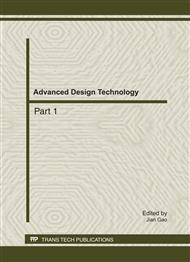p.2478
p.2482
p.2486
p.2490
p.2495
p.2506
p.2511
p.2517
p.2523
CNC Lathe Circular Interpolation Principle and Technological Parameters Research and Positive and Negative Arc Running Direction Analysis
Abstract:
Compiled nc programs, perfect quality parts processing of nc machining process, is compiling personnel, nc machining operation personnel most concern. This paper discusses correct understanding circular interpolation principle and processing technology analysis[1]; When the manual programming how correct establishment self-positioning presended car parts, accurate discriminant number of circular interpolation instructions as an example, this paper expounds the direction of running direction accurately arc discriminant method, remove programming staff for professional too strong and difficult to understand the confusion generated.
Info:
Periodical:
Pages:
2495-2505
Citation:
Online since:
August 2011
Authors:
Price:
Сopyright:
© 2011 Trans Tech Publications Ltd. All Rights Reserved
Share:
Citation:


